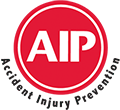The Workplace Hazardous Materials Information System is Canada’s national hazard communication standard and is in place to protect Canadian workers. Employees in Canada have the right and responsibility to know and understand the hazards associated with chemical products in the workplace.
What is WHMIS and Who Needs Training?
WHMIS is a comprehensive guide that informs employees of the safe use of chemicals and hazardous materials in the workplace. Through identification, classification, Safety Data Sheets, labelling and proper training, employees are taught how to handle these chemicals appropriately. In 2015, the WHMIS standard was updated to include and align with the Worldwide Hazard Communication System and the Globally Harmonized System of Classification.
The update not only changed the name to WHMIS 2015 but also included other benefits, such as:
- Expansion of the criteria for classifying hazards, enhancing the capability to assess the intensity of risks.
- Additional categories of hazards are now incorporated.
- The criteria for physical hazards align with the Transportation of Dangerous Goods (TDG) regulations.
- There is now a uniform approach to terminology, including hazard and precautionary statements.
- The Safety Data Sheet (SDS) format has been standardized, and its requirements are more detailed.
WHMIS training is essential for Canadian workers who might encounter hazardous substances. Below are typical settings where WHMIS training is necessary, though this list is not exhaustive.
- Construction Workers: Frequently handling hazardous materials daily, from gasoline to cleaning agents and solvents.
- Office Personnel: Offices, often underestimated for hazards, usually have multiple dangerous substances like cleaning agents and ink cartridges.
- Cleaning Staff: Regularly using various chemical cleaners and solvents, many of which are hazardous, necessitating WHMIS training for safe usage.
- Security Professionals: Operating in diverse work environments, security staff may encounter numerous hazardous materials, requiring proper WHMIS training for safe handling.
- Automotive Industry Workers: Routinely exposed to lubricants, fluids, cleaners, and solvents, making WHMIS training mandatory for these professionals.
Requirements for Canadian Employers and Employees
Most Canadian workers should have WHMIS training to understand how to use hazardous materials in the workplace safely. Typically, workers should be retrained annually on WHMIS and should not exceed three years without training. There are responsibilities placed both on employers and employees.
Employers are required to:
- Train employees how to use hazardous materials safely
- Prepare labels and SDSs
- Ensure there is accurate labelling of hazardous materials
- Ensure control measures are in place
Employees are required to:
- Participate in WHMIS training
- Attend other training as required
- Identify hazards
- Participate in controlling hazards
- Report unsafe work conditions
- Take all steps to protect co-workers and themselves
The Benefits of Having WHMIS Training
WHMIS training is an essential part of keeping your workplace safe. Being trained creates a workplace culture of safety, allowing employees to correctly identify hazards and respond accordingly. Proper handling of hazardous materials reduces workplace incidents and emergencies. WHMIS training helps to improve employee confidence and keeps everyone safe.
AIP’s WHMIS Training
AIP Safety’s comprehensive WHMIS training program equips workers with crucial knowledge of Canada’s national hazard communication standard, focusing on hazard classification, container labelling, safety data sheets, and protective measures for handling chemicals and toxic substances in the workplace.
Our course is up-to-date with the transition to WHMIS 2015, incorporating the Globally Harmonized System (GHS) to align with international standards. Participants will learn about chemical hazards, health risks, and safe usage practices. Employers will benefit from ensuring their workforce is informed about workplace chemical identities, hazards, and safety precautions.
Completing this course provides workers with a 3-year WHMIS certification, surpassing Occupational Health and Safety standards and fulfilling legal requirements for any job that involves chemical handling. To learn more about our WHMIS training, Contact us today.

